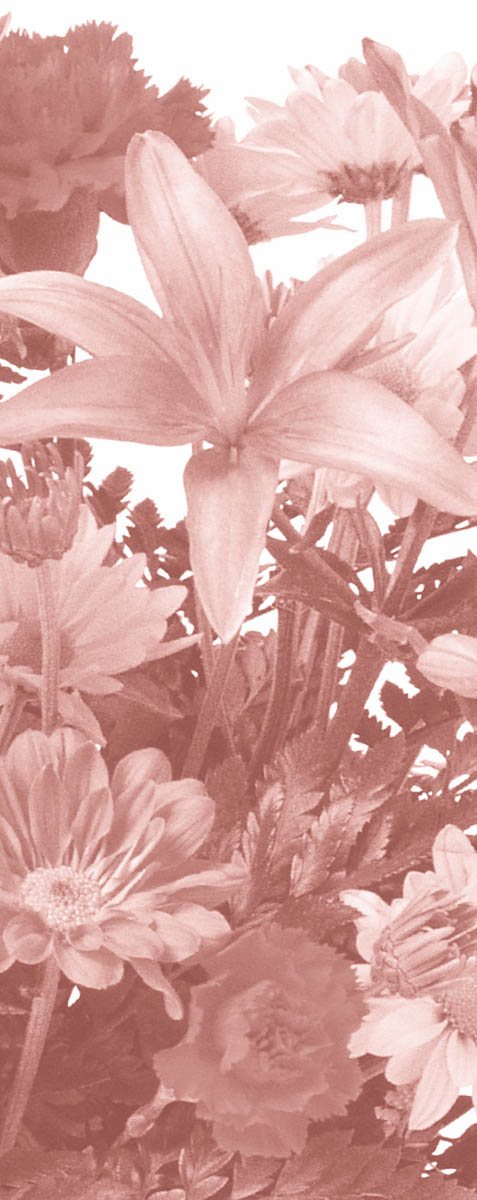

Your Aromatic Pantry should be stocked with ingredients that make your heart (and your skin) sing. Nature has ensured that there is no shortage of oils from which to choose, and one of the greatest blessings of life is this range of fragrant natural selections.
A variety of methods are employed to extract aromatic oils from plant materials. Among the most widely known are distillation and hydrodiffusion, mechanical expression, enfleurage, solvent extraction, and carbon dioxide (CO2) extraction. Use the information given here to decide which type of aromatic oil best suits your purposes.
The most common method of extracting essential oils from plant material is steam distillation. The plant material is placed on a grate, which is then placed on top of (or into) boiling water in a large vat. The steam from the boiling water is forced through the plant material, causing it to rupture and release its aromatic constituents in vaporized form. The vapors rise and are passed through a condenser or set of cooling tanks, where they convert into liquid form. At the end of the distillation process, there are three distinct products:
Although essential oils are purely natural extracts, the heat employed in the distillation process can destroy components that are present in the natural plant material. The distillation method can also produce some chemical constituents that are not present in the plant material in its natural state. For example, azulene, a valuable skin-soothing agent, is present in distilled German chamomile essential oil, but not in chamomile flowers.
Hydrodiffusion is far less common than steam distillation. In this process, steam is forced through the plant material from above rather than from underneath. Because this method tends to produce more water than does steam distillation, it is most useful when the desired output is plant water rather than plant oil.
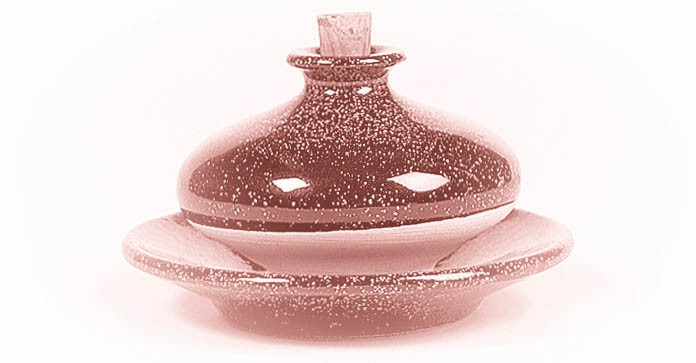
Mechanical expression extracts oils from the peel of citrus fruits. The process can be as simple as pressing on the plant with bare hands or as complex as placing the plant material in a large, porous drum that rotates rapidly enough to literally wrench out the aromatic oil. Though the expression process generates its own heat, the fact that no external heat source is used means that the oil produced has an aroma that is very true to the plant itself.
Enfleurage is used to obtain aromatic oil from flower petals that cannot endure the heat of the distillation process. This process is rarely used today because it is expensive and labor-intensive.
Enfleurage involves the placement of individual flower petals on glass plates that have been smeared with a fatty substance, often a mixture of lard, suet, and benzoin (a preservative). After 24 to 48 hours, during which time the fat absorbs the aromatic oils from the flowers, the spent petals are replaced with fresh ones. The aromatic fat is then mixed with a solvent. The aromatic oil dissolves fully into the solvent, and the substance is filtered several times to remove the fat, which is discarded. Alcohol is then used to remove the solvent material, leaving behind an absolute, or fragrant oil.
Absolutes and concretes are extracted via one of a number of petrochemical solvents. These solvents have a lower boiling point than water and are most often used to extract aromatic oils from plant materials — often flower petals — that are too delicate to withstand the heat needed to distill essential oils. The plant material is placed on grills, which are lowered into the solvent material. As the solvent is heated, the flower oils, waxes, and color are dissolved into it. Once the spent flowers are removed, the aromatic slush is gently heated to evaporate the solvent. Further treatment using alcohol removes more of the solvent, and the remaining substance is called a concrete.
Concretes, which are often cold-stored until needed to produce an absolute, are further treated with solvents to separate out the aromatic oil and much of its color. When the extracted liquid, or absolute, is removed from the concrete, primarily wax remains.
Wax can be used as a fragrant, effective thickener and binding agent in your creams and lotions. However, because wax has limited commercial value, it has not always been treated to remove the residual solvent materials. Take special care when opening a new package, since any residual solvents can cause a light burning sensation in the lungs and nostrils.
There is great debate about the proper place of absolutes and concretes in both the aromatherapy and cosmetics industries. Consult reference books for further information regarding this ongoing professional discourse.
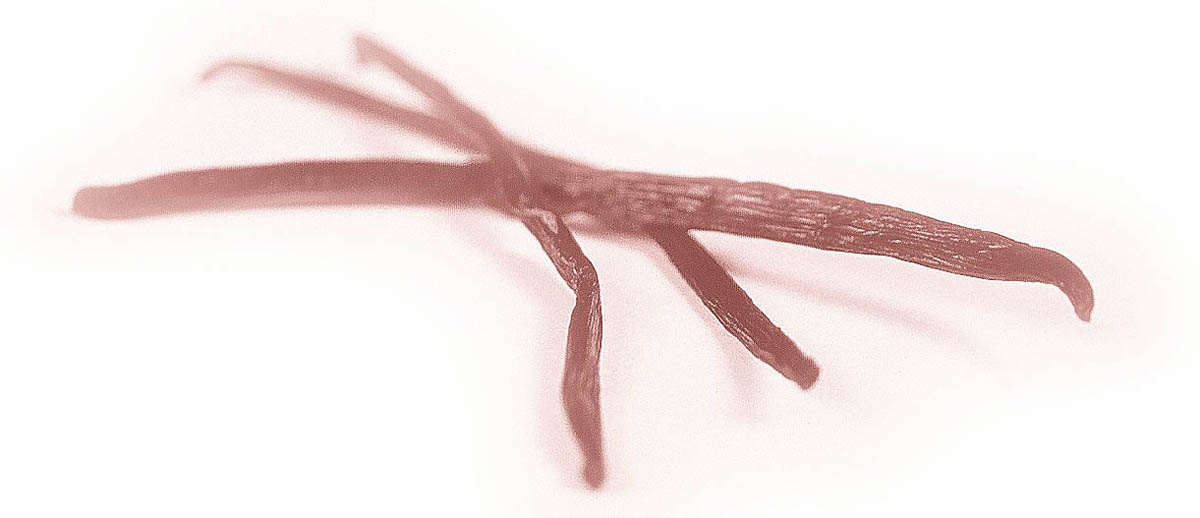
Carbon dioxide extraction removes aromatic oils without heat, instead applying very low pressure to the plant materials. The CO2 extraction method produces oils that are reputed to retain most of the qualities of the whole plant, including fragrance, color, and chemical composition.
There are two distinct types of aromatic CO2 oils:
Total CO2 extracts are typically thick, tarlike substances that contain the plant’s oils, along with waxes, fats, resins, and color. Bottles of total CO2 extracts often must be held under warm water in order to achieve a pourable consistency. (I sometimes use a clean wooden stir stick or toothpick to remove total CO2 extracts from their bottles.)
Select CO2 extracts contain far less solid plant material, and their consistency, while still thick, is more like that of molasses. Select CO2 extracts are a bit more expensive than total CO2 extracts, in part because more of the plant material is discarded after completion of the select extraction process. I prefer these extracts; their consistency often makes them much easier to use.
Be sure to ask which type of CO2 extract you are purchasing. If the supplier doesn’t know, he should offer to find out. Purchase only from a supplier who can obtain this information for you. My favorite CO2 extracts for skin care are rose hips seed, sea buckthorn berry, and calendula.
Florasols (formerly called phytols or phytosols) are produced using a fairly new extraction technique developed in the United Kingdom. Solvent extraction employs low-temperature tetrafluoroethane gas, a hydrofluorocarbon that is carefully and fully removed after the extraction process is complete.
The name florasol does not adequately describe the full range of oils that are available, including oils from nonfloral plant materials, such as cinnamon bark, bay leaf, orange peel, and nutmeg. Florasols are thought to be more concentrated than most other aromatic oils, capturing far more individual chemical components of the plant than other extraction methods. Perhaps this is the reason that, in my experience, much less florasol than essential oil and/or absolute is needed to scent a jar of cream.
The ability to discern quality essential oils is developed over time; it cannot be effectively taught in a book. But an indispensable part of using essential oils safely and effectively is taking the time to learn about them, one or two at a time. In this way, you will begin to “know” the oils as you would a friend and will slowly learn to maximize their potential.

Among the chief frustrations expressed by my workshop participants are how difficult it is to know what to look for in a supplier of oils, how to recognize an inferior-quality oil, and what to do when suspicion arises about the purity of an oil. There is no substitute, especially for beginners, for ordering and comparing small quantities of the same oils from well-known suppliers. Admittedly, the learning curve is steep, and aromatherapy is not always an inexpensive venture. In my experience, however, quality does not always mean extreme expense. You must take the time to seek out quality oils that suit your needs and finances. If you begin with a few basic oils (many of which are used in the recipes in this book) and decide to enjoy the learning experience rather than expect to know everything by next week, you will soon be an “expert” in the oils you choose for your personal use. (See Resources for a list of suppliers that combine high-quality products with reasonable prices.)
Without a chemical analysis, there is no surefire way to determine the purity or components of a product labeled an essential oil. You could have an independent lab conduct an analysis, but the prices start at around $150 for one test. The good news is that as you work with essential oils, you will slowly be training your senses, especially your sense of smell, to distinguish exceptional oils. In addition, there are several questions you can ask to maximize your chances of purchasing high-quality oils. But first, you must take the time and accept the responsibility for educating yourself. The best place to start is a book on essential oils; check your local library or bookstore for titles. The Internet is also a good place to find information. Though neither medium is always reliable, they are excellent places to begin gathering information as you start your aromatic journey. If you are a beginner, I highly recommend that you start with Aromatherapy: A Complete Guide to the Healing Art, by Kathi Keville and Mindy Green.
Once you have a basic arsenal of information, purchase about H ounce of two or three oils from two or three different suppliers. (Note: It is generally discourteous to use a supplier’s toll-free order line to discuss the oils. Instead, call customer service and ask the supplier to set aside mutually convenient time for you to ask pertinent questions.) For your first purchase, I recommend lavender; eucalyptus; and a citrus oil, such as sweet orange or lemon. Each of these oils is versatile and has a pleasant aroma. Be sure that a single type of oil purchased from different suppliers comes from the same species of plant.
Here is a list of questions to use as a guideline in making essential oil purchases. You do not have to ask all of these questions; choose a few that are important to you and begin with those.
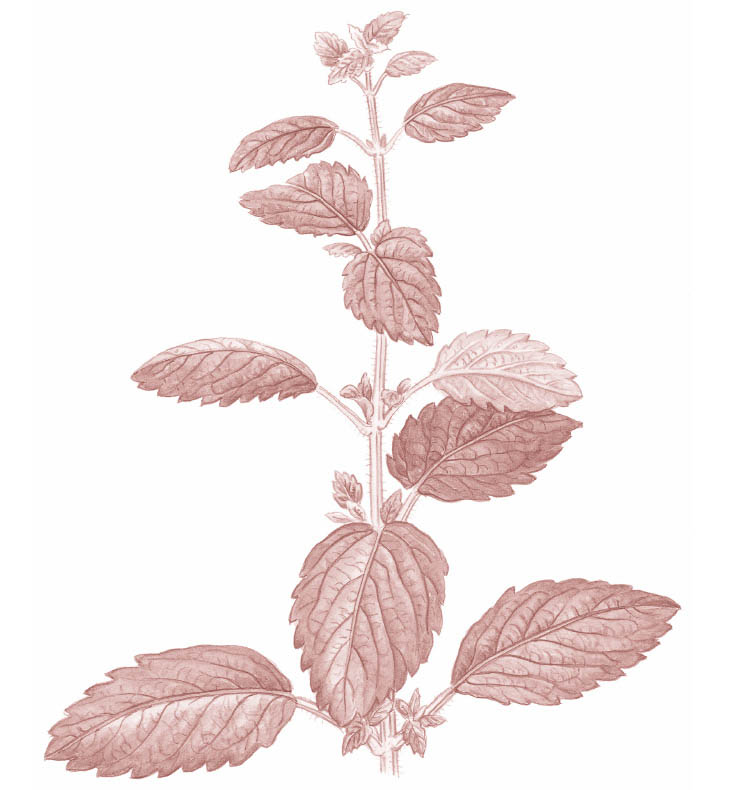
Lemon balm
Aromatic oils are concentrated plant extracts and should be treated with respect in order to prevent injury, maximize shelf life, and increase usefulness. Most important, essential oils should be stored out of the reach of children and pets.
Citrus oils typically lose their effectiveness within a year of purchase. Other oils remain potent for decades, especially if stored properly. Though storage of oils in colored bottles and in a cool, dry, dark environment is helpful (I store mine in the refrigerator), the chief enemy of essential oils is oxygen, which destroys their chemical components and significantly compromises their effectiveness. Try to store oils in bottles that have as little air space as possible between the top of the oil and the lid of the bottle. As oil is used, transfer the unused portion to a smaller bottle to minimize the headspace. This retards oxidation, extending the shelf life of the oil. Plastic bottle caps are fine, but rubber stoppers can disintegrate when exposed to essential oils for long periods.
Several years ago, while measuring rosemary essential oil for a batch of soap, I dropped the bottle on the counter and the oil splashed up into my eyes. The pain was excruciating. You must take particular care not to splash or rub the oils in the eyes. If you’re using a dropper to measure small amounts of oil, you probably don’t need to use protective eyewear and gloves. Nevertheless, you should follow these simple precautions to protect yourself and those around you.
Essential oils damage wood surfaces and clothing, so do not place bottles of oils on wood furniture and always protect your clothing. These oils also eat through many low-grade or thin plastics, so store them in glass jars. When you open a bottle, be careful not to let it slip though your hands and splash onto your skin or work area.
If more than a few drops of undiluted essential oil gets onto your skin or eyes, immediately douse your skin or eyes with an unscented fatty oil, such as olive or sweet almond, until the burning sensation subsides (essential oils are attracted to fats). Rest for several minutes; if the eyes or nose area is exposed to essential oils, you could develop a terrible headache. If you still feel very uncomfortable after a few minutes, don’t hesitate to call your health-care practitioner or visit an emergency room.
Before handling aromatic oils, you’ll want to read carefully the caution here.
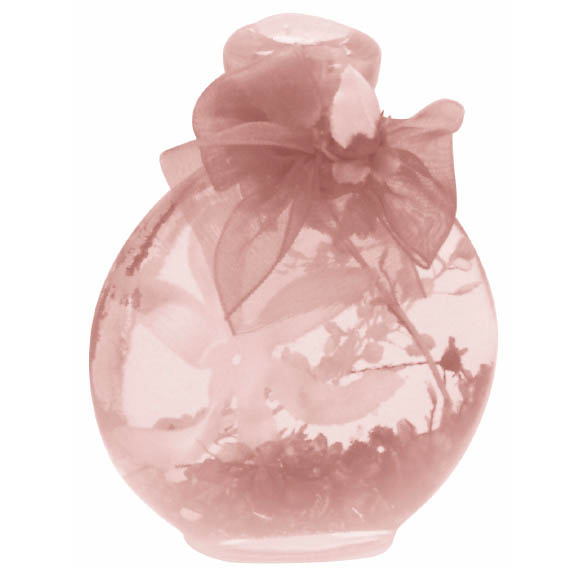
There are dozens of oils from which to choose as you stock your Aromatic Pantry. As you learn more about the different aromatics, you can refine your collection to fit your changing skin-care needs and fragrance preferences.
The following 24 aromatic oils form the core of my Aromatic Pantry. They can be used alone or in combinations to create products to suit many different skin types and problems. This list, which names and briefly describes the oils, is followed by an outline of the exquisite aromatics I like to use to complement or enhance the aroma of these “core” aromatic oils (see Exquisite Aromatics at a Glance).
Calendula (Calendula officinalis) has been used for centuries to treat inflammatory skin conditions, and it is said to hasten the healing of minor burns, cuts, scrapes, insect bites, and other abrasions. The deep-colored, thick calendula CO2 extract is not distilled; the oil is removed from the petals by the carbon dioxide extraction method. When the extract is added to a cream or lotion in small quantities, a lovely golden color results, along with skin-soothing properties. Either the total or select extract can be used, but I prefer the select, which is easier to use.
Carrot seed (Daucus carota) essential oil is included in several recipes for products designed for mature, dry skin. Carrot seed oil’s high carotol (a sesquiterpene alcohol) content gives it skin-rejuvenating properties. The oil’s aroma is sweet, yet dry and earthy.
German chamomile (Matricaria recutita) and Roman chamomile (Chamaemelum nobile) essential oils are distilled from the flowers and tops of two similar yet distinct plants.
German chamomile, generally the more costly oil, is unique because its azulene, found only in the distilled plant material, lends it a blue color that fades over time. Ensure that your oil contains no synthetic azulene, which some companies use to stretch the pure oil. German chamomile oil has significant anti-inflammatory capabilities, which make it quite useful in skin care.
Roman chamomile also has anti-inflammatory capabilities and is a relaxing oil to add to diffuser blends. Although both German and Roman chamomile essential oils are good choices for skin-care products, I prefer to use the more soothing German variety.
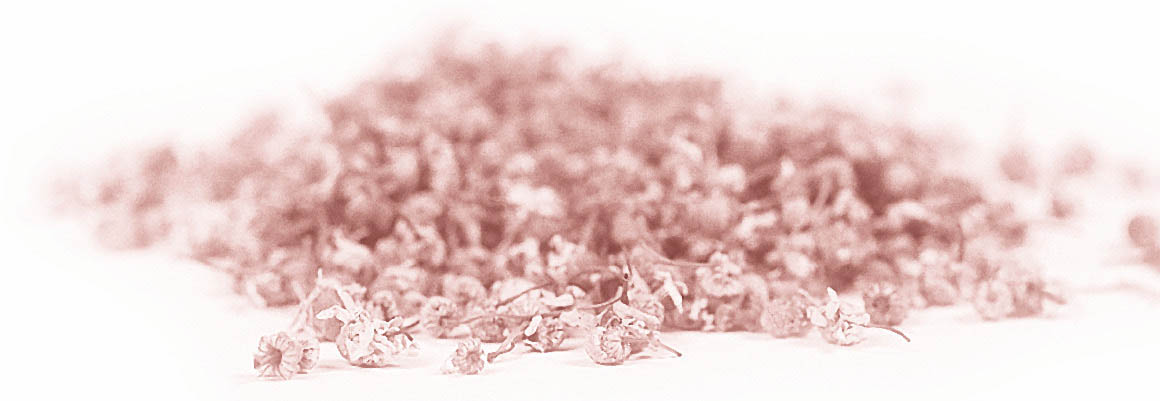
Distilled from the leaves, twigs, bark, and cones of the cypress tree (Cupressus sempervirens), grown mainly in southern France, cypress essential oil is woodsy and refreshing. Because it is highly astringent and invigorating, I use it in toners for oily, greasy skin. Cypress oil is also said to be useful in minimizing the appearance of cellulite, though I have not found much evidence to support this claim. It is also believed to help relieve some vascular conditions, such as varicose veins.
Frankincense (Boswellia carteri), which typically hails from India, Eritrea, and Ethiopia, is distilled from the dried resin of the plant. This oil rejuvenates tired, mature, sallow-looking skin, while sharing its warm scent with a sweet, balsamic undertone. Frankincense is a versatile oil that creates lovely diffuser blends with citrus, wood, and spice oils.
There are several types of geraniums (Pelargonium spp.), each producing a different essential oil. Geranium oil is distilled from the leaves of this wonderfully scented group of plants, the majority of which are native to South Africa. The premium “Bourbon” oil is produced on Réunion Island. Good for all skin types, geranium promotes stability and balance. Since it is a mild astringent, I like to use it in toners designed for oily skin. Its sweet, fruity, floral aroma, sometimes with a touch of mint, makes it a lovely addition to any skin-care product.
Helichrysum essential oil is distilled from the flowering tops of the everlasting plant (Helichrysum italicum), and exploration into its usefulness to the aromatic world has only just begun. Its aroma is sweet yet pungent and somewhat spicy. Helichrysum oil reduces inflammation and itching and has demonstrated a remarkable ability to heal even decades-old scar tissue. Its skin-regenerating and anti-inflammatory properties show a great deal of promise.
Lavender (Lavandula spp.) was used undiluted by a perfumer in the early 1900s to accelerate the healing of his skin, which had been severely burned in a laboratory explosion. Since then, it has become by far the most popular and well-known (and most frequently adulterated) essential oil, and its usefulness to any aromatic skin-care regimen cannot be overstated. Distilled from the stems and flowering tops of the herb, lavender balances and tones all skin types.
Lemon (Citrus limon) essential oil is taken from the rind of the fruit by mechanical expression. It is useful for oily and acneic skin conditions, toning the skin and balancing sebum production. Lemon oil is a refreshing astringent, and its cheerful, lively scent is nice in facial toners and diffuser blends.
Melissa (Melissa officinalis) essential oil is one of the most expensive essential oils, and its valuable skin-care properties make it worth every penny. Melissa need be used only in tiny proportions in any blend to soothe and tone the skin, relieve headaches, short-circuit herpes outbreaks, and relieve nervous tension. Melissa essential oil is often too expensive to use in a skin-care product. As a result, the hydrosol, which is sold at a fraction of the cost of the essential oil, can be incorporated into toners and creams to produce some of the same soothing effects.
Myrrh (Commiphora spp.) essential oil is taken from the coagulated gum resin of several species of shrubby plants that grow in eastern Africa and Arabia. Myrrh was used extensively by ancient Egyptians to mummify dead bodies, and it is now used to preserve youthful skin tone. It is used in the perfume and pharmaceutical industries and is said to help control athlete’s foot fungus. Myrrh oil has a deep, rich aroma that is mentioned numerous times in the Bible. This essential oil may thicken markedly with age; to make it thinner and easier to work with, hold the closed bottle under hot running water (take care not to scald the skin, of course).

I arose to open for my beloved, and my hands dripped with myrrh, my fingers with liquid myrrh.
— Song of Solomon 5:5
Myrtle oil is distilled from the leaves of the Myrtus communis plant and has a strong, clear aroma that reminds me of a mixture of flowers, citrus, and bay. Though myrtle is said to be useful to aid acne and oily skin conditions, while in South Africa in 1999, I combined it with sandalwood and rose to restore luster to my skin during the dry, arid winter. Myrtle oil has a wonderfully soothing aroma that is said to help relieve tension and insomnia.
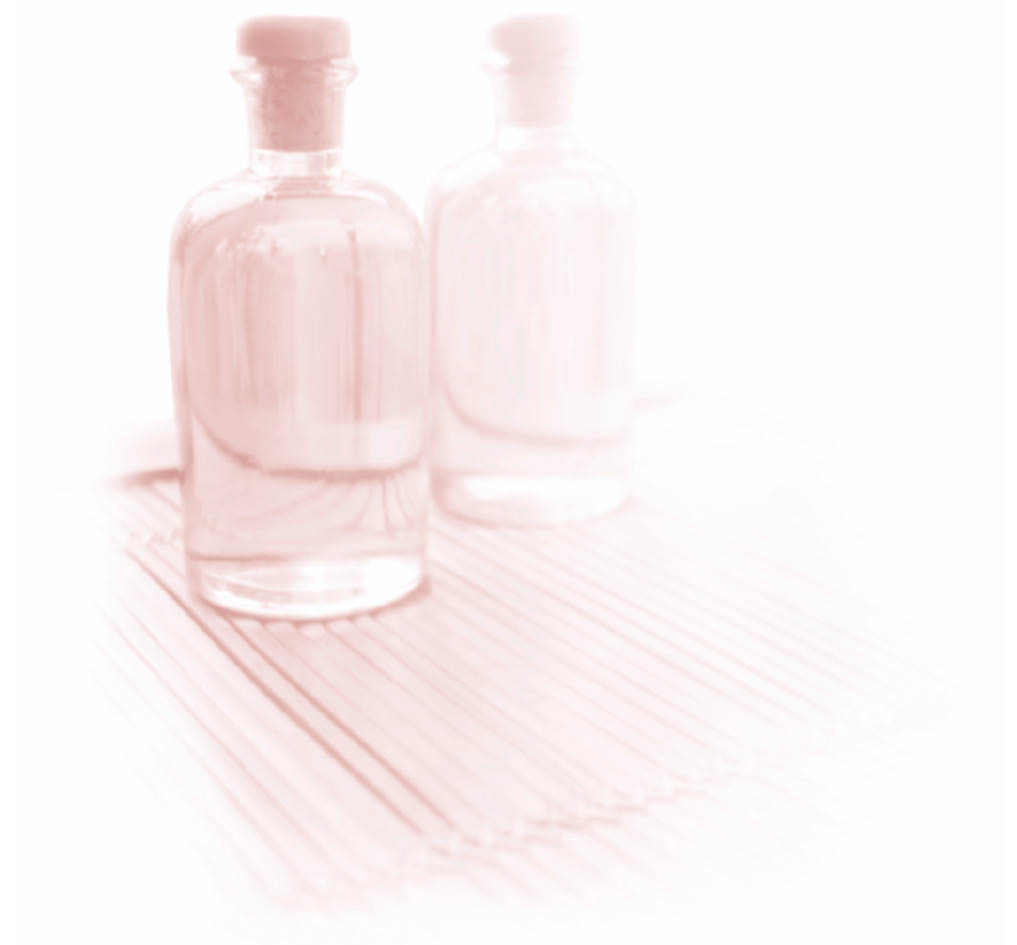

Flowers do not see, hear, taste, or touch, but they react to light in a crucial manner, and they direct their lives and their environment through an orchestration of aroma.
— Tom Robbins, Jitterbug Perfume
Also called orange blossom essential oil, neroli essential oil, distilled from flower petals, is one of the most precious jewels of the aromatic world, and massive quantities of plant material are needed to produce just a small amount of oil. Neroli flowers are harvested mainly in Tunisia and other parts of northern Africa. Harvesters spread sacks underneath bitter orange trees (Citrus aurantium), then vigorously shake the branches. Falling petals are collected in the sacks. Neroli essential oil has a delicate aroma that, while somewhat citruslike, is smooth, warm, and rich. This oil is suitable for any skin type — especially mature skin — and has a gentle, balancing effect.
Neroli essential oil commands a price far higher than that of most other essential oils. Thus, it is sometimes distilled with the leaves and twigs of the tree to produce neroli fleur sur petigrain essential oil. Though very different from neroli oil, neroli fleur sur petigrain is a pleasant aromatic that affords enjoyment of something like a neroli oil experience at a fraction of the price (they are not interchangeable, however). A stress reducer, tension reliever, and anxiety alleviator, neroli tones delicate and sensitive skin. Neroli is also available as an absolute.
Patchouli essential oil is distilled from the leaves of the patchouli herb (Pogostemon cablin, P. heyeanus syn. patchouli), a favorite of many baby boomers because of its popularity during the 1960s. Patchouli is one of the best essential oils for rough, cracked skin, but most people either love or hate its aroma. For this reason, I like to blend it in small quantities with rose, lemon, and cedarwood to make wonderful diffuser blends and creams. Experiment with patchouli in combination with different oils to create blends that you like.
Coveted the world over for its beauty, seductive curves, fragrance, and lovely range of colors, the rose (Rosa x damascena, R. x alba, R. x centifolia) is another star of the aromatic stage and a component of some of the world’s finest perfumes. Often called the Queen of Flowers, the rose is cultivated for essential oil extraction mainly in France, India, Turkey, Bulgaria, and Morocco. Its essential oil is distilled from the petals of the flowers, while rose absolute and concrete are removed from the flowers with solvents.
Aromatherapists report the use of Rosa x damascena essential oil to ease severe depression. Noted British aromatherapist Robert Tisserand suggests that this oil is also an effective treatment for aging, dry, and sensitive skin. Because it may contain residual solvent materials from the extraction process, there is some debate in the aromatherapy community about the use of rose absolute in aromatherapy treatments.
Rose blends well with several other oils, including neroli, sandalwood, frankincense, and lavender. For consistency and quality, my personal preference is the rose essential oil that is produced in the Kazanlak Valley of Bulgaria.
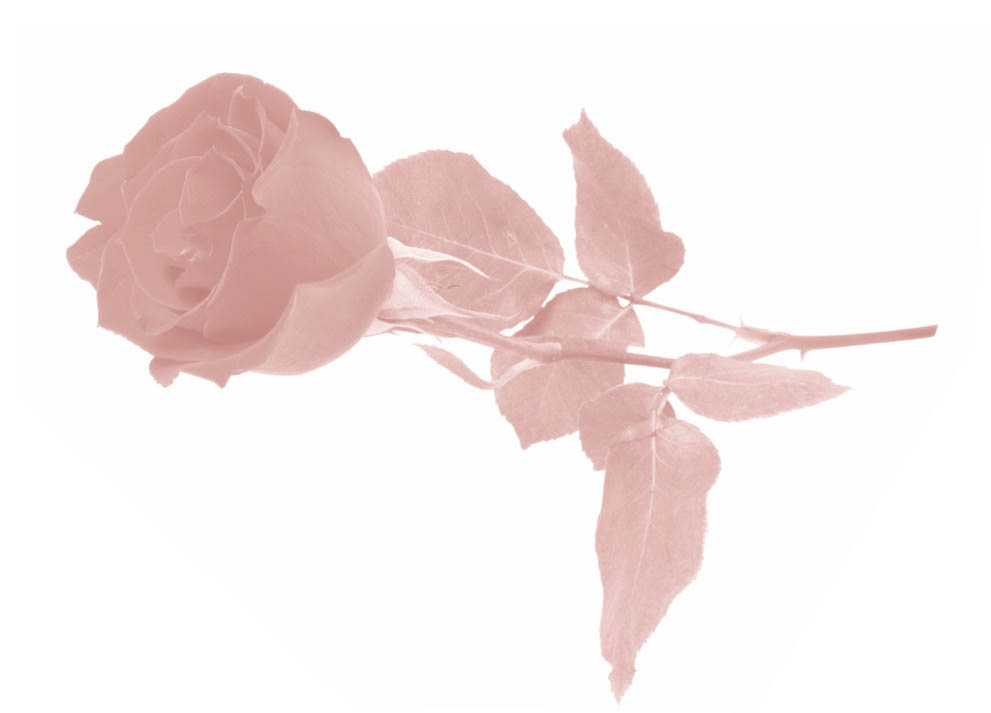
Rose hips are the fruits of roses, which contain seeds that are used to create this extract. Rosa rubiginosa, which is cultivated throughout Asia and South America, is the species used to make rose hips seed CO2 extract. This oil promotes tissue regeneration and helps prevent and reduce scarring from cuts and conditions such as acne. Rose hips seed oil also reduces wrinkles and maintains the texture, freshness, and elasticity of the skin. Because of its high amounts of linolenic acid and beta-carotene, both of which are soothing and restorative, this oil is indispensable in handmade skin-care products.
Rosemary is distilled from the leaves of the popular culinary herb Rosmarinus officinalis. Its strong, camphoraceous aroma has a bracing, invigorating effect. For skin care, I use and recommend exclusively the verbenone type of rosemary (see The Best Hydrosols for Skin Care for more information), which is especially helpful for a variety of skin conditions, including oily skin and scalp and dandruff.
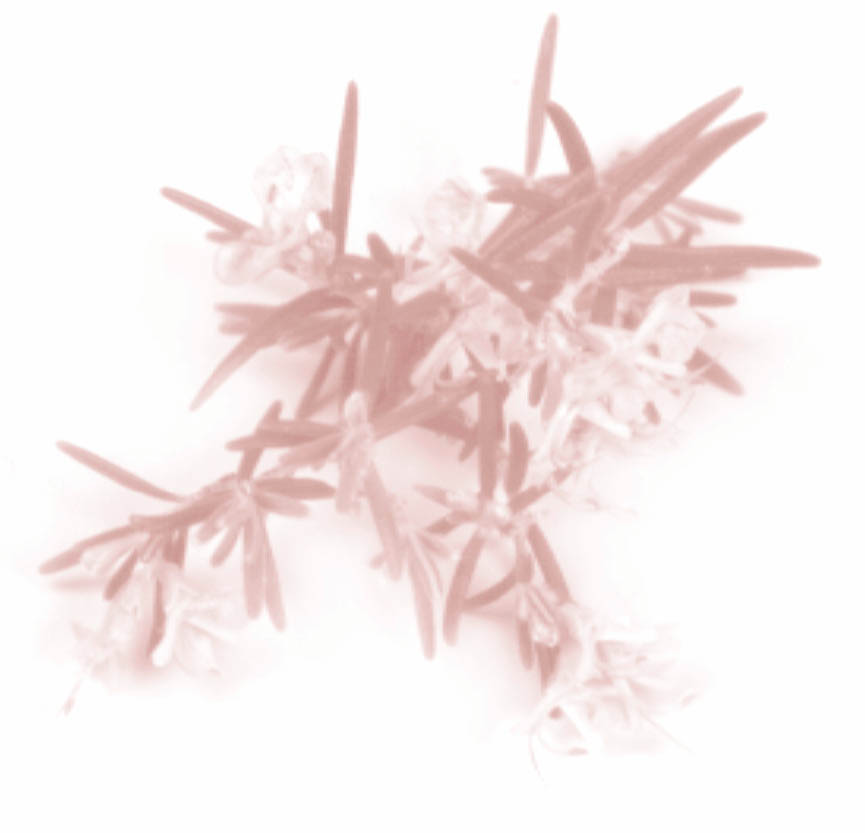
Sandalwood essential oil is distilled from the heartwood and roots of the environmentally threatened sandalwood tree (Santalum album). The most prized oil hails from Mysore, a region of India where the oil is produced under strictly controlled conditions in government distilleries. Sandalwood, which is useful for dry, chapped skin and rashes, should be treasured and used sparingly. Although the tree is cultivated in India, it may not be harvested until it is at least 30 years old, and poaching from the wild has become a serious concern. Use this oil responsibly.
I first began using sea buckthorn berry CO2 extract in 1995, when hardly anyone had heard of it. Now, it is turning up everywhere, a testament to its skin-soothing properties. Sea buckthorn berry CO2 is taken from the berries of the Hippophae rhamnoides plant, which is cultivated largely in Lithuania and China. Its properties include a high amount of linoleic acids and vitamins A and E, which are restorative and soothing to the skin. Sea buckthorn berry is rich in beta-carotene, lending it a deep orange color, and is effective as an antiwrinkle and skin-softening ingredient. As such, you will find it in many of my recipes.
Spikenard or “nard” essential oil is distilled from a plant (Nardostachys jatamansi) that is native to the Himalayan Mountains of India, Nepal, and China. Along with frankincense and myrrh, spikenard was used by the ancients and is reported in the New Testament to have been used to anoint Jesus Christ shortly before his crucifixion. This makes sense, since the oil is said to have significant sedative and muscle-relaxing properties. Spikenard oil has an amber color and smells warm, bittersweet, spicy, and earthy. I like to add spikenard oil to products designed to restore balance and luster to dry, mature skin.
This essential oil is distilled from the leaves and twigs of the tea tree (Melaleuca alternifolia) and is one of the most powerful antibiotic and antifungal essential oils. Despite its pungent aroma, it is gentle and appropriate for virtually any skin type when used in moderation. Tea tree essential oil is especially effective at regulating sebum production and has a remarkable ability to interrupt oily skin outbreaks and the flare-ups we typically call zits.
Manuka (Leptospermum scoparium) essential oil, a distant relative of tea tree oil produced mainly in New Zealand, can be used interchangeably with tea tree oil to alleviate greasy skin conditions and acne.
Thyme essential oil is yielded by many varieties of the popular culinary herb, the most popular species being Thymus vulgaris. However, many types of thyme essential oil are strong skin irritants. For skin-care purposes, use only the linalol type (ask your supplier to verify the type), which has mild antiseptic qualities that are useful for oily skin types.
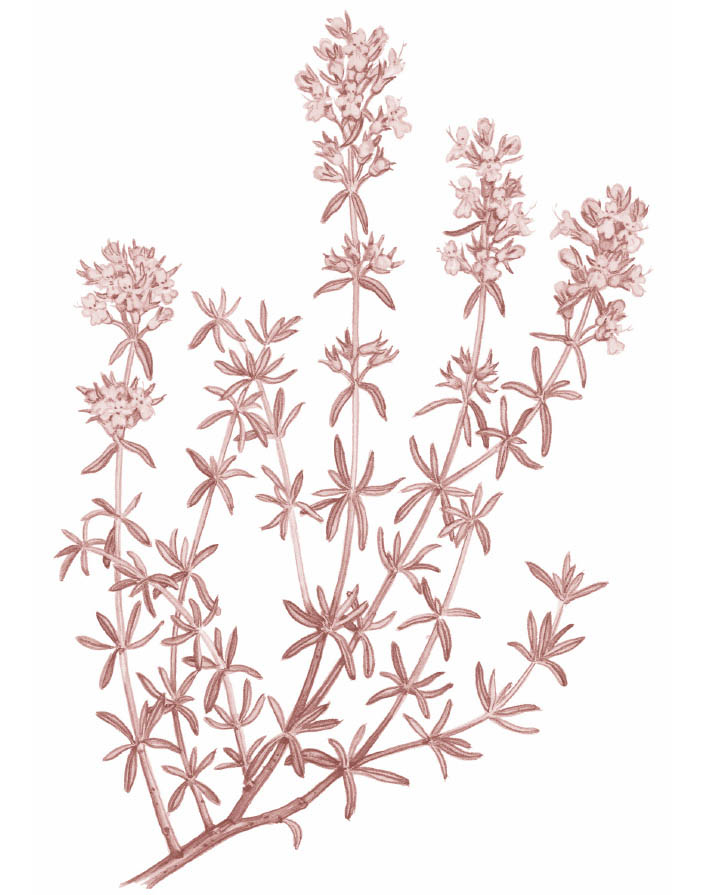
Like German chamomile, yarrow (Achillea millefolium) contains significant amounts of azulene and is useful for soothing inflamed, chapped skin. This oil is also an astringent and is indicated for treating acne, but it should not be used on sensitive skin. Yarrow essential oil can lend a blue tint to your skin-care products. I combine yarrow and chamomile to create Out of the Blue Balm Bar, a great itchy-skin reliever.
Ylang ylang (pronounced ee-LUNG ee-LUNG), with its intriguing scent, is one of my favorite essential oils; I like the CO2 extraction as well. Ylang ylang oil has a fiercely persistent, exotic aroma that some find overwhelming, and it can induce headache and nausea if used in abundance. The essential oil is distilled from the petals of the ylang ylang flower, which droop from Cananga odorata var. genuina trees cultivated mainly on Madagascar, Réunion, and the Comoro Islands off the eastern coast of southern Africa. Ylang ylang is believed to be a powerful aphrodisiac.
There are several distinct grades, or fractions, of ylang ylang oil, each named for the characteristics produced by the plant material when it is distilled for various amounts of time. The “super” or “extra superior” oil is produced by distillation of the flower petals for as little as an hour, and the “extra” fraction results from the collection of distillate for several hours after the first hour. Lower grades of the oil, which are sometimes distilled for up to an entire day, are of markedly different quality and are often used to adulterate the superior oils. Ylang ylang oil is frequently adulterated with cananga oil, distilled from the flowers of Cananga odorata var. macrophylla.
Ylang ylang essential oil balances sebum production in the skin, so it is useful for all skin types, but it should be used only in tiny quantities in any handmade product. I have successfully incorporated the oil into creams and toners for acne-scarred and oily skin.

|
Skin Type |
Aromatic Skin-Care Oils |
Exquisite Aromatic Suggestion |
|
Oily |
cypress, lemon, tea tree (or manuka) |
osmanthus (optional) |
|
Dry |
carrot seed, helichrysum, rose |
linden blossom |
|
Normal |
geranium, lavender, myrtle |
zdravetz |
|
Sensitive |
German chamomile, lavender, neroli |
none |
Though all aromatic oils are wonderful in their own right, one category stands alone. These oils, which I call “exquisite aromatics,” have especially distinctive characteristics. The few exquisite aromatics also known for their skin-care capabilities, such as neroli, rose, and melissa, are contained in the Aromatic Skin-Care Pantry.
Many factors make aromatics exquisite. First, they smell wonderful, which accounts for their use in the world’s most famous and recognizable perfumes. Second, many plants from which these oils are extracted produce very small quantities of essential oils, or the oils are removed from the petals of flowers that are too delicate to withstand the heat of the distillation process. Because of these qualities, exquisite floral aromatics are extremely expensive and often adulterated, making the pure ones the truest treasures of the aromatic world.
Exquisite aromatics are frequently composed of substances that are said to influence human sexual desire. For example, jasmine oil contains indole, a chemical also found in human sweat and feces, which is said to draw men to women. These oils are especially suitable for use in romantic aids, such as massage oils and body lotions.
With few exceptions (see here), exquisite aromatics are not recognized for their skin-care benefits. Yet if a remarkable aroma is one of your goals, you would be well served to select a few of these oils and incorporate a tiny portion into some of your blends. Again, be aware that absolutes can contain a bit of residual solvent (see discussion here), so be careful using them, especially if you have sensitive skin. You may wish to simply set them aside to use in perfume blends and in handmade soaps, which are washed off the body quickly.
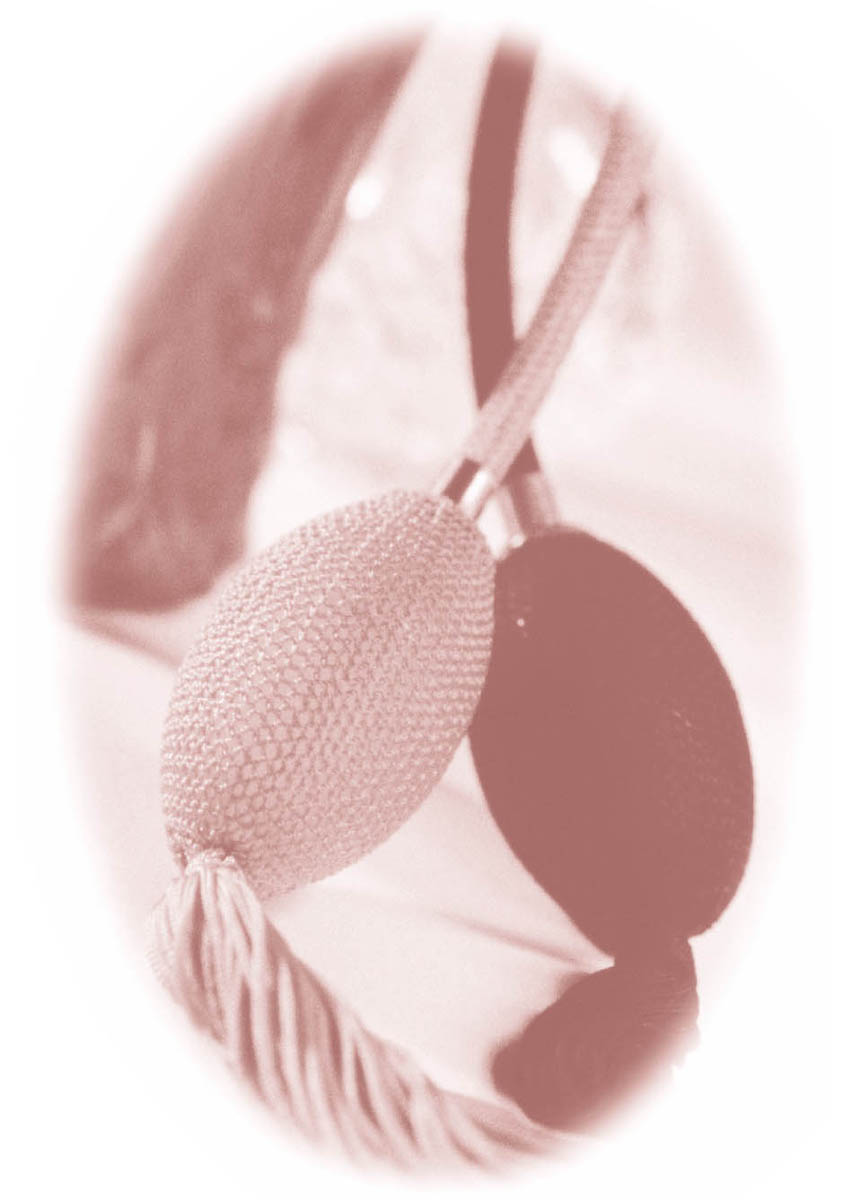

Like the perfumer who concocts his mixture, knowing that he must respect a balance and a certain order to obtain the perfume, we create our mixture by obeying the same rules.
— Marguerite Maury, The Secret of Life and Youth
|
Aromatic Oil |
Botanical Name |
Extraction Technique |
Complementary Oils |
|
Beeswax or honeycomb absolute |
Apis mellifera |
solvent |
bergamot, orange, rose, sandalwood |
|
Carnation |
Dianthus caryophyllus |
solvent |
rose, sandalwood, ylang ylang |
|
Jasmine |
Jasminum officinale |
solvent |
geranium, grapefruit, rose, ylang ylang |
|
Linden blossom |
Tilia x vulgaris |
solvent or distillation |
geranium, rose, sandalwood |
|
Mimosa |
Acacia spp. |
solvent |
lavender, neroli, oakmoss, ylang ylang |
|
Narcissus |
Narcissus poeticus |
solvent |
jasmine, tuberose, ylang ylang |
|
Oakmoss |
Evernia prunastri |
solvent or distillation |
clary sage, neroli, rose |
|
Osmanthus |
Osmanthus fragrans |
solvent |
jasmine, neroli |
|
Tobacco leaf |
Nicotiana tabacum |
CO2 |
clary sage, orange, rose, vanilla |
|
Tuberose |
Polianthes tuberosa |
solvent |
bergamot, jasmine, orange, rose, sandalwood |
|
Vanilla |
Vanilla planifolia |
solvent or CO2 |
orange, rose, sandalwood |
|
Vetiver |
Vetiveria zizanioides |
distillation |
rose, sandalwood |
|
Violet leaf |
Viola odorata |
solvent or CO2 |
jasmine, orange, rose, sandalwood |
|
Zdravetz |
Geranium macrorrhizum |
distillation |
rose, ylang ylang |